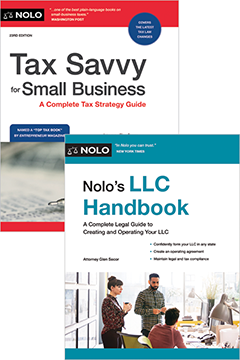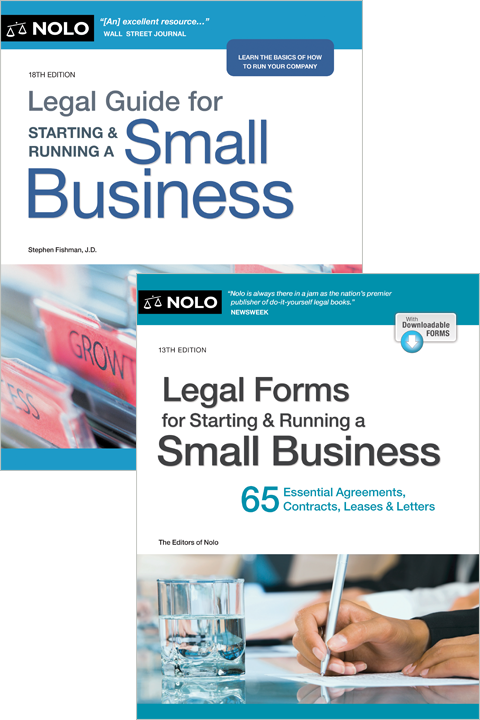Put the terms of your partnership in writing to protect your business.
Partnerships generally don't require much paperwork. You don't even need to submit any official filings with the state to create a general partnership. As a result, a partnership agreement will be the most important document for your business. It will provide the basic rules and procedures for how your partnership will operate.
You're not legally required to have a partnership agreement. But creating this agreement is essential to any new partnership.
Why Do You Need a Partnership Agreement?
A partnership agreement is critical because it usually provides the only framework for how to run the partnership. Because your partnership doesn't have articles of incorporation like a corporation or articles of organization like a limited liability company, you and your partners will have to rely on your own formation document.
A partnership agreement is important for several reasons.
A partnership agreement allows you to make the rules for your business. Without a written agreement saying otherwise, your state's laws will control many aspects of your business. However, if you and your partners create your own agreement, then you'll get to negotiate and determine what works best for your partnership. State laws aren't specific to a particular business, and lawmakers don't know the intricacies of partners' relationships. You and your fellow business owners likely know what's best in your case. With a partnership agreement, you can outline policies that are in everyone's best interests.
A partnership agreement can resolve partner disputes. If you and your partners don't spell out your rights and responsibilities in a written partnership agreement, you'll be ill-equipped to settle conflicts when they arise. Consequently, minor misunderstandings could erupt into full-blown disputes. A partnership agreement can manage expectations and provide an already agreed-upon solution, or, at the very least, a path to a solution.
A partnership agreement provides consistency and stability among partners. Partnerships without an agreement typically work out problems as they arise, often resulting in fluctuating decision-making and inconsistent outcomes. For example, suppose one partner is ambitious and effective but easily bored. They could be passionate about a social media marketing campaign for your business one year, but move on to a new idea before they've finished developing your company's social media presence. If your business has a partnership agreement that divides up the partner responsibilities, then you can avoid any lack of follow-through from one of the partners. In effect, the decision-making is essentially with the agreement and not with any one partner at any given time.
A partnership agreement gives the business structure when partners join or leave. Establishing the rules of a partnership up front allows your business the freedom to change and expand. Partnerships rely heavily on their partners. If one partner leaves or another joins, the change could shake up the business or even end the partnership. But if you already have a partnership agreement in place, the new partners have a blueprint for how the business needs to run. In addition, you'll already have a written process for how to continue the business without one of the partners.
The Uniform Partnership Act and Your Partnership Agreement
Each state has laws governing partnerships. Specifically, every state, except Louisiana, has adopted either:
- The Uniform Partnership Act (UPA), or
- The Revised Uniform Partnership Act (RUPA).
The National Conference of Commissioners on Uniform State Laws (NCCUSL), a nonprofit association, created the UPA in 1914. The NCCUSL wanted to create standardized rules for partnerships that states could adopt. The more states that adopted the uniform act, the more legal consistency there would be across the country. The NCCUSL has revised the original UPA multiple times. People (and states) generally refer to any revised version of the UPA as RUPA.
These statutes establish the basic legal rules that apply to partnerships and will control many aspects of your partnership's life unless you set out different rules in a written partnership agreement. The terms of your partnership agreement will likely overlap with some of the rules outlined in UPA or RUPA. But crafting your own agreement will give you the freedom to deviate from the uniform acts.
Don't be tempted to leave the terms of your partnership up to these state laws. Because they were designed as one-size-fits-all fallback rules, they might not be helpful in your particular situation. It's much better to have an agreement in which you and your partners state the rules that will apply to your business.
What to Include in Your Partnership Agreement
Don't be shy about discussing difficult topics with your partners. Your partnership agreement should cover the good, the bad, and the ugly. This document, after all, will be the cornerstone of your partnership moving forward.
Establishing terms and conditions for your partnership at the beginning, while everyone is on good terms, is in everyone's best interests. Above all, make sure the terms of your partnership agreement are fair and reasonable.
Below is a list of the major areas that most partnership agreements cover. You and your partners-to-be should consider these issues before you put the terms in writing.
Name of the Partnership
One of the first things you must do is agree on a name for your business. You can use your own last names, such as "Smith & Wesson." Alternatively, you can adopt a DBA (short for "doing business as") for your partnership, such as "Westside Home Repairs." Your state might refer to a DBA as either:
- a trade name
- an assumed name, or
- a fictitious business name.
If you use a DBA, then you'll likely need to register the name with your state or county. You should check your state's DBA laws for specific requirements.
You'll need to pick a unique business name. Typically, your partnership name must be different from the names of any other business registered with the state. States usually have a database of registered business names that you can search through on their secretary of state website. Before investing too much time or money, you should run a search to make sure your proposed business name is available.
Contributions to the Partnership and Ownership Percentage
It's common for partners to contribute some cash, property, or other services to the business to get it off the ground. Many business owners will put their personal money into the business as a capital contribution. Other partners will offer up a vehicle, equipment, office supplies, or personal services.
You and your partners will need to agree on who will contribute what to the partnership at the start. For example, suppose Tommy, Polly, and Michael, each with a special skill set, decide to start a manufacturing business. The three partners agree that Tommy will contribute $10,000 and use his contacts to secure the partnership's initial customers. Polly will contribute $20,000 and handle the company's initial accounting and tax documents. Michael will fix up a warehouse and provide the manufacturing equipment. Tommy, Polly, and Michael record their initial contributions in their partnership agreement.
Along with figuring out each partner's initial contributions, you'll need to decide what ownership percentage each partner will have. Typically, partnerships will assign ownership interests based on what the partners initially contribute and what they will contribute over the course of the partnership. Alternatively, you and your partners might decide to distribute the ownership interests equally regardless of your intended contributions.
How you decide to assign ownership interest and profit allocations might differ. If you have an unusual financial plan, it's essential to put it in the partnership agreement.
Allocation of Profits, Losses, and Draws
Will profits and losses be allocated in proportion to a partner's percentage interest in the business? Will each partner be entitled to a regular draw (a withdrawal of allocated profits from the business) or will all profits be distributed at the end of each year?
You and your partners could have different financial needs and ideas about how the money should be divided up and distributed. Because you all likely started this business to earn money, it's crucial that you decide at the beginning how and when the money will be split.
How much each partner will receive. Oftentimes, a partner's allocation of profits and losses lines up with their ownership share. So, if you and your partner each own 50% of the partnership, then you might split your profits and losses evenly. But you might want to account for the partners' capital contributions when determining profit allocation.
For example, suppose Justice and Carmen operate an electronic repairs business as a general partnership. At the start of the company, Justice contributed $20,000 and Carmen contributed $5,000. The partners agree that Carmen will work for 5 days out of the week and Justice will work for two. Because Carmen will take on the bulk of the work, the two partners agree that Carmen should have a 70% ownership interest in the business and Justice should have a 30% interest.
The partners also agree that they should be paid back their capital contributions sooner rather than later. As a result, they devise a plan that says that Justice will get 75% of the profits, and Carmen will receive 25% of the profits until the capital contributions are paid in full—that is, Justice gets her $20,000 paid back and Carmen gets her $5,000 paid back. Once the capital contributions are repaid, they agree to allocate the profits based on their ownership interests, with Justice receiving 30% of the profits and Carmen receiving 70% of the profits.
When each partner will receive their share. It's probably simpler to have everyone receive their share of the profits on the same schedule. You and your partners might agree that each partner will receive their allocation on the last day of every month. In addition to determining whether the partners will receive their allocations at the same time, you'll also need to decide on the frequency of draws. The frequency could depend on your type of business and what you and your partners can afford. For example, you might decide for the first year that you'll receive distributions monthly, and then every year after, you'll receive distributions biweekly.
Binding Authority of the Partners
Without an agreement to the contrary, any partner can bind the partnership (to a contract or debt, for example) without the consent of the other partners. Partners in a partnership are severally and jointly liable for the partnership's debts. If your partner binds your partnership to a debt that the partnership doesn't pay, then the lender can come after you personally to pay all of that debt.
If you want one or all of the partners to obtain the others' consent before obligating the partnership, you must make this fact clear in your partnership agreement.
Partnership Decisions and Voting Power
Although there's no magic formula or language for making decisions among partners, you'll head off a lot of trouble if you try to work it out beforehand. You can, for example, require a unanimous vote of all the partners for every business decision.
Alternatively, if that option leaves you feeling fettered, you can require a unanimous vote for major decisions and allow individual partners to make minor decisions on their own. In that case, your partnership agreement will have to describe what constitutes a major and minor decision.
You should carefully think through issues like these before you and your partners have to make important decisions.
Management Duties
You might not want to make ironclad rules about every management detail. But you'd be wise to work out some guidelines in advance. For example, you might want to divide up general responsibilities like which partner will:
- keep the books
- file the partnership taxes
- deal with customers
- supervise employees, and
- negotiate with suppliers and vendors.
Think through the management needs of your partnership and be sure you've got everything covered.
Admitting New Partners
Eventually, you might want to expand the business and bring in new partners. Agreeing on a procedure for admitting new partners will make your lives a lot easier when this issue comes up. At the very least, you should determine which percentage of vote is required to admit a new partner.
Withdrawal or Death of a Partner
At least as important as the rules for admitting new partners to the business are the rules for handling the departure of an owner. Some important considerations for when a partner leaves, is ousted, dies, or becomes incapacitated are:
- whether a partner's departure should automatically end the partnership
- who can buy a departing partner's share of the partnership
- how much a departing partner's share is worth, and
- which events require a partner's withdrawal.
This part of the agreement is often lengthy and complex. Some partnerships opt to draft a separate buyout agreement to cover these topics.
Dispute Resolution
There are three main types of dispute resolution:
- Mediation: The partners settle their disputes using the help of a mutually agreed-upon third-party mediator. Mediations aren't binding. But partners usually agree to cooperate fully and fairly with the mediator to reach a mutually satisfactory compromise.
- Arbitration: The parties agree to allow a mutually agreed-upon third-party arbitrator decide the outcome of their dispute. Arbitrations are usually binding, meaning the partners agree to comply with whatever decision the arbitrator makes. You can specify how the partners will choose the arbitrator, where the arbitration will take place, and whether the arbitrator's decision will be binding.
- Litigation: The partners hash it out in court. The agreement can specify whether the losing party will pay for the winning party's court costs and attorneys' fees.
In many cases, partners prefer to resolve disputes through mediation. You can include a clause in your partnership agreement that says that the partners agree to try in good faith to settle the dispute through mediation. But if a settlement can't be reached in however many days (for example, 30 or 60 days), then the dispute will be handled through arbitration or litigation.
Termination of the Partnership
You'll want to go ahead and decide what can and will end your partnership. If your partnership can end by a certain percentage of votes by the partners or by a particular event, specify these details. You should also cover how the assets of the partnership will be distributed once the partnership is dissolved.
Read our article on dissolving a partnership for in-depth guidance on the steps to take to close your business and end your liability.
Help Drafting Your Partnership Agreement
As you can see, there are many issues to consider before you and your partners open for business—and you shouldn't wait for a conflict to arise before hammering out some sound rules and procedures. If you need personalized legal advice, you should talk to a local business lawyer.
Self-help resources, such as our Start & Run a Business Bundle can help you think through the details and put them in writing. You can also use our interactive partnership agreement to help you customize and draft your own document.



